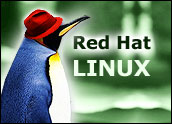
For those of us old enough to remember life before the Internet, the term “virtual space travel” probably conjures memories of childhood visits to the local planetarium.
Fast forward to today, and things are just a little different. In today’s Internet-enabled world, ordinary citizens can explore the universe from the comfort of their own homes through the likes of Google Sky, Google Moon and Google Mars. Virtual tours are available from sites like SpaceWander and Space.com.
Never before has the universe been so close within reach of everyday people.
Now, thanks to the virtual world of Second Life, the possibilities have been extended even further.
World Without Limitations
Today on Linden Lab’s Second Life, ordinary people can make real contributions to mankind’s understanding of the universe. They can collaborate with real-life space experts on spacecraft design or take walks on the surface of replicas of other worlds. Through Second Life, people can talk directly with NASA scientists and engineers, attend meetings and participate in international workshops with other enthusiasts from around the world.
“Everything science fiction has shown us on TV and in the movies is at our doorstep,” Charles White, subject matter expert for virtual world technologies with NASA’s Jet Propulsion Labs (JPL), told LinuxInsider. “Once you’re in this virtualized environment, you’re not limited by reality, and that’s a real benefit.”
Virtual Conferences
Freedom from the constraints of reality benefits myriad facets of NASA’s work.
On a practical scale, for example, JPL held a conference at CalTech last summer, and 100 people attended physically while 40 people attended virtually via Second Life. The conference proceedings in the virtual world were broadcast for those in real-life attendance, including the miniature version of the auditorium that had been specially constructed in Second Life.
“What was really strange was that the real people could see the avatars,” recounts White, who is also known as “Jet Burns” in Second Life. “One attendee in Canada got out of his avatar chair and showed his PowerPoint presentation in the virtual world, which was being broadcast to the real world. I found myself looking at the real-life podium and expecting to see him there.”
Besides fostering communication in a way never before possible, the ability to attend virtually also brought with it the not-insignificant benefit of saving the cost of “40 international flights, 40 hotel rooms, 40 rental cars — talk about being green,” White explains.
Government Agencies Join In
NASA is one of a handful of government agencies that have begun to establish a presence on Second Life in the last year or so; others include the National Oceanic and Atmospheric Administration (NOAA), the National Institutes of Health and its National Library of Medicine (NLM), and the Centers for Disease Control and Prevention (CDC).
Of course, NASA has been using virtual technologies for years, including the flight simulators astronauts are trained on, White pointed out.
The beauty of Second Life for research and exploration, however, is that it provides an environment that’s scientifically accurate but also allows researchers to break the laws of physics in size and other constraints, White explained.
That combination allows researchers to develop a microscopic avatar that can walk through and inspect a spacecraft’s substructures, for example, or huge avatars that can look at the Earth, Moon and Mars and perform orbit calculations among them, he explained.
“The real key is that we can now do this not just person to person, but with 100 people in a collaborative, immersive and sustaining environment,” he explained.
CoLab Island
NASA has actually established two different islands in Second Life, both a part of the virtual world’s SciLands islands devoted to science and technology on the adult main grid.
More than 20 such organizations have facilities in the SciLands, including also the International Spaceflight Museum, which operates spaceports with rockets on display.
The first NASA island, CoLab, focuses on outreach and collaboration with the public and NASA partners. CoLab started at the NASA Ames Research Center (ARC) in the San Francisco Bay Area and has since grown to include members from other NASA centers as well.
Information Sharing
“NASA CoLab in Second Life was intended to be a community of people immersed in collaboration, very peer-to-peer and flat,” Andrew Hoppin, communities liaison for CoLab at NASA Ames, told LinuxInsider. Hoppin is also known as “Drew Frobozz” in Second Life.
“Now we have people from all 10 NASA centers participating and learning from non-NASA folks,” Hoppin said. “Having this virtual environment has been very beneficial for informal sharing.”
NASA CoLab features a number of educational and interactive 3-D displays, and visitors can also join communities focused on hands-on projects such as building a mockup of the International Space Station or testing a mockup of a lava-tube habitat on another planet.
“Some of the best research is being done by independent groups,” Hoppin noted. “Much of the work is being done by volunteers, who often serve as internal consultants to NASA.”
Indeed, the virtual CoLab project was recently contacted by the Johnson Space Center, which is interested in assessing the viability of using the virtual world as a training environment, Hoppin added.
CosmosCode
On the software side, NASA CoLab has also launched an initiative, CosmosCode aimed at building a core offering of free and open source space software that will be available through an independent project-hosting Web site.
To do that, it has begun to develop and manage a free-software community focused on space that will provide a common access point for individuals, academics, companies and space agencies around the world that are using, contributing to, or supporting re-usable, modular, extensible or standards-driven space exploration software.
In addition to a source-code repository and project tools, the CosmosCode site will offer guides and how-tos focused on developing open source for the space sector; blogs; and discussion forums.
Competing With Google
Before the launch of CoLab, “most people in the Bay area didn’t even know NASA was there, because we were competing with the likes of Google,” Hoppin noted. “We always need public support, and to be relevant and interesting to the public — if we’re not, something’s wrong.”
From that respect, the effort could well prove to be a success.
“All I could think was how great it would be to get my 28 kids to explore the area,” Jackie Blumer, a 4th grade teacher of science and social studies at Greenville Elementary, a NASA Explorer Schools participant in Greenville, Ill., told LinuxInsider.
Field Trip to Mars
Blumer is a lifelong space enthusiast and has participated in two zero-gravity flights — one through Zero Gravity Corp. and one through NASA’s Explorer Schools program.
The possibility of attending virtual meetings with NASA officials is a compelling one, Blumer added, as is the ability to take her class to Mars, virtually speaking.
“If I could take my students and say ‘OK, we’re going to travel to Mars today,'” she said, “that would be a really cool thing.”










































